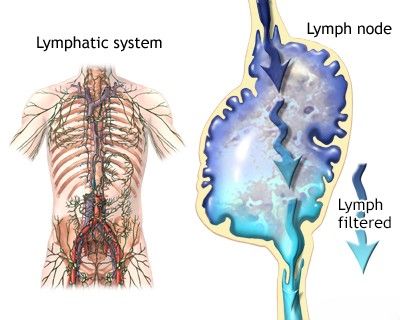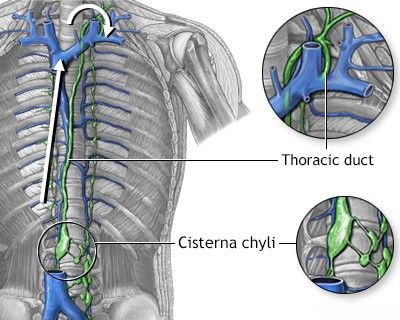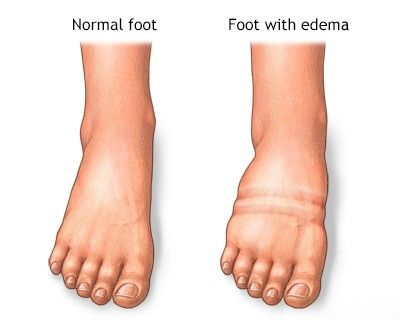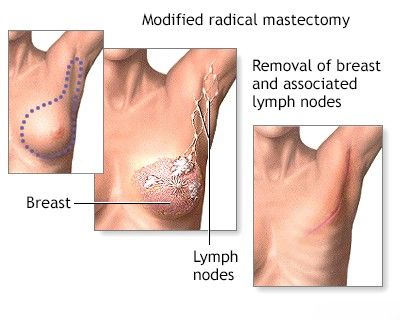Lymphostasis
Understanding Lymphostasis (Lymphedema)
Definition and Pathophysiology
Lymphostasis, more commonly known as lymphedema, is a chronic condition characterized by the abnormal accumulation of protein-rich interstitial fluid (lymph) in tissues, leading to swelling (edema). This occurs due to a dysfunction or impairment of the lymphatic system's ability to adequately drain lymph from various organs and tissues (most commonly affecting the arms or legs) towards the main lymphatic collectors and ultimately the thoracic duct, which returns lymph to the bloodstream. This impaired lymph outflow results in temporary or chronic stagnation of tissue fluid in the skin and subcutaneous tissue.
The lymphatic system plays a crucial role in maintaining fluid balance, immune surveillance, and absorption of fats. When lymphatic vessels are damaged, obstructed, or malformed, lymph cannot be transported effectively, leading to its buildup in the interstitial spaces.
Types and Causes of Lymphostasis
Lymphostasis can be broadly classified based on its origin:
- Primary Lymphedema: This is caused by congenital malformations or abnormalities of the lymphatic system itself. It can be present at birth (congenital lymphedema, e.g., Milroy's disease), develop during puberty (lymphedema praecox, e.g., Meige disease), or appear later in life (lymphedema tarda).
- Secondary (Acquired) Lymphedema: This is more common and results from damage or obstruction to a previously normal lymphatic system. Several factors contribute to the onset of acquired lymphostasis:
- Surgery and Radiation Therapy for Cancer: Removal of or damage to lymph nodes and lymphatic vessels during cancer surgery (e.g., axillary lymph node dissection for breast cancer, pelvic lymph node dissection for gynecological or urological cancers) or radiation therapy is a leading cause. For example, lymphostasis of the arm (lymphedema) is a common complication after mastectomy with axillary lymph node removal for breast cancer.
- Infections: Recurrent cellulitis or erysipelas of the limbs can damage lymphatic vessels. Filariasis (a parasitic infection transmitted by mosquitoes, common in tropical regions) is a major cause of lymphedema worldwide, leading to elephantiasis.
- Trauma: Severe injuries, burns, or crush injuries that damage lymphatic vessels.
- Chronic Venous Insufficiency: Severe, long-standing venous disease can overwhelm the lymphatic system.
- Tumor Diseases: Malignant tumors (e.g., of the pelvic organs) can directly compress or infiltrate lymphatic vessels and nodes, creating a mechanical obstacle to lymph outflow.
- Obesity: Significant overweight and obesity can impair lymphatic function and contribute to the development or worsening of lymphedema, partly due to disturbances in cardiovascular system work and increased pressure on lymphatic pathways.
- Inflammatory Conditions: Certain chronic inflammatory diseases can affect lymphatic function.
- Immobility: Prolonged lack of muscle activity can reduce lymphatic pumping.
With lymphostasis, the impaired lymph outflow can manifest in several clinical forms or related conditions:
- Lymphedema: The characteristic swelling due to lymph accumulation.
- Lymphocele: A localized collection of lymph fluid, often forming a cyst-like structure, typically after surgery or trauma.
- Lymphorrhea: Leakage of lymph fluid from the skin surface, often through breaks in the skin or vesicles.
- Elephantiasis: A severe, advanced stage of lymphedema characterized by massive limb enlargement, skin thickening, fibrosis, and hyperkeratosis, often due to chronic filarial infection or untreated severe lymphedema.
Stages and Symptoms of Lymphostasis
Lymphostasis typically progresses through several stages, each with characteristic symptoms and tissue changes. Early recognition and intervention are crucial to prevent progression to more severe, irreversible stages.
Stage 1 Lymphostasis (Reversible Lymphedema, Latent or Subclinical Stage)
At the beginning of its development, lymphatic edema (lymphedema) is often barely noticeable or intermittent. Key features of Stage 1 include:
- Mild, Progressive Swelling: Patients may experience a small, barely noticeable, progressive swelling, often in a limb (arm or leg). They might get used to it and not initially perceive it as a significant issue.
- Pitting Edema: The swelling is typically soft and "pitting," meaning that when pressure is applied to the swollen area with a finger, a temporary indentation (fossa) remains after the finger is removed.
- No Pain (Usually): Pain is generally not a feature at this early stage.
- Reversibility: The swelling often noticeably reduces or disappears with limb elevation, overnight rest, or after physical activity that promotes lymphatic drainage (e.g., swimming, specific exercises like using an exercise bike).
- Subjective Symptoms: The patient may notice an increase in the volume or girth of the limb, or a feeling of heaviness or fullness. The skin over the edematous area may appear slightly puffy, and its natural patterns (creases) may be smoothed out.
Alertness from patients and clinicians at this stage is vital. Timely initiation of lymphostasis treatment can often halt the progression of the disease and prevent the development of more severe complications. Outpatient courses of treatment, which typically include manual lymphatic drainage (MLD) massage, fitting for and use of compression hosiery (garments), and specific physiotherapy exercises (lymphatic drainage exercises), are often prescribed. Medications to improve venous and lymphatic outflow (phlebotonics or lymphagogues) may also be considered, although their efficacy for primary lymphedema is varied. Following an initial course of outpatient treatment, sanatorium or specialized lymphedema clinic treatment can be recommended to consolidate gains and establish long-term management strategies.
Stage 2 Lymphostasis (Spontaneously Irreversible Lymphedema)
At this stage of lymphostasis, tissue changes become more pronounced and less reversible with simple measures:
- Persistent Swelling: The edema no longer resolves completely with elevation or overnight rest.
- Tissue Hardening (Fibrosis): The integument (skin and subcutaneous tissue) begins to harden due to the proliferation (growth) of connective tissues (fibrosis) in response to chronic lymph stagnation. The edema becomes less pitting or non-pitting.
- Deep Fossa on Pressure: When pressing on the swollen tissue with a finger, a deep indentation may still remain initially, but the tissue feels firmer.
- Skin Changes: The skin becomes elastically stretched and taut, which the patient often feels. Stronger tension can lead to pain.
- Increased Limb Volume and Weight: The patient may experience a general increase in body weight due to the retained fluid and tissue changes in the affected limb.
- Increased Risk of Infections: The stagnant, protein-rich lymph fluid is a good medium for bacterial growth, increasing the risk of cellulitis or erysipelas.
At Stage 2 lymphostasis, indications for more intensive treatment, including surgical options, may arise. Procedures like lymphovenous anastomoses (LVAs) or vascularized lymph node transfers (VLNTs) might be considered to improve lymphatic drainage. Long courses of comprehensive decongestive therapy (CDT), often in a spa or specialized clinic setting, followed by meticulous selection and consistent use of compression hosiery, are crucial to manage the pathological process and improve the patient's quality of life.
Stage 3 Lymphostasis (Lymphostatic Elephantiasis - Stage of Irreversible Changes)
This is the most advanced and severe stage of lymphedema, characterized by largely irreversible tissue changes and significant functional impairment:
- Massive Limb Enlargement (Elephantiasis): The affected limb (e.g., leg) loses its normal contour and becomes massively enlarged and disfigured due to the extensive proliferation of altered soft tissues.
- Severe Fibrosis and Sclerosis: The skin and subcutaneous tissues become extremely hard, dense, and fibrotic.
- Skin Changes: The skin becomes thickened, hyperkeratotic (warty or leathery appearance), and may develop papillomatous growths, deep creases, or folds.
- Lymphoceles and Lymphorrhea: Accumulations of lymph in the subcutaneous tissue (lymphoceles) can occur, and lymph may leak from the skin surface (lymphorrhea), increasing infection risk.
- Impaired Mobility and Joint Stiffness: The increased volume and weight of the limb severely limit mobility. Joint stiffness (ankylosis or pseudoankylosis) can develop, potentially leading to the patient being unable to walk.
- Increased Body Weight: The affected limb itself contributes significantly to the patient's overall body weight, further limiting activity.
- Recurrent Infections: Frequent and severe episodes of cellulitis, erysipelas, or fungal infections are common.
- Trophic Ulcers: Non-healing ulcers can develop due to poor tissue viability and chronic inflammation.
At this stage of lymphostasis, the patient's general condition is often worsened, and the disease can be life-threatening due to complications like sepsis. Treatment is very difficult and focuses on managing complications, reducing limb volume as much as possible, and improving quality of life. Conservative correction of lymph outflow using intensive CDT (lymphatic drainage massage, hardware pneumocompression) is required. After some reduction in limb volume, surgical operations such as debulking procedures (resection operations to remove excess altered skin and subcutaneous tissue) may be considered. Subsequently, microsurgical procedures like lymphovenous anastomoses might be attempted to improve lymphatic outflow. Lifelong, hard elastic compression (e.g., custom-fitted compression stockings or multilayer bandaging) is absolutely essential.
A common cause of secondary lymphostasis (lymphedema) of the arm in women is the surgical removal of axillary lymph nodes (axillary dissection) as part of a mastectomy operation for breast cancer treatment.
Diagnosis of Lymphostasis
Diagnosing lymphostasis involves a thorough clinical evaluation and may include specialized imaging tests:
- Medical History: Detailed history of swelling onset, duration, progression, family history of lymphedema, history of cancer treatment (surgery, radiation), infections, trauma, travel to filariasis-endemic areas, and other medical conditions.
- Physical Examination: Inspection and palpation of the affected limb(s) and uninvolved contralateral limb for comparison. Assessment of swelling (pitting or non-pitting), skin changes (thickening, hyperkeratosis, papillomatosis, Stemmer's sign - inability to pinch a fold of skin at the base of the second toe or finger), limb circumference measurements, and examination for lymph node enlargement or signs of infection.
- Imaging Studies (to confirm diagnosis, assess severity, or rule out other causes):
- Lymphoscintigraphy: This is often considered the gold standard for assessing lymphatic function. A radiotracer is injected into the web spaces of the fingers or toes, and its uptake and transport through the lymphatic system are imaged over time. It can show delayed or absent tracer movement, dermal backflow, and identify sites of obstruction.
- Ultrasound (Doppler): Primarily used to rule out venous causes of limb swelling, such as deep vein thrombosis (DVT) or chronic venous insufficiency. Can also show subcutaneous tissue thickening in lymphedema.
- Magnetic Resonance Imaging (MRI): Can show characteristic honeycomb patterns in the subcutaneous tissue, dermal thickening, and fluid accumulation. MR lymphangiography is an emerging technique.
- Computed Tomography (CT) Scan: Can show increased subcutaneous tissue and skin thickening but is less specific for lymphedema than lymphoscintigraphy or MRI. May be useful to rule out malignancy causing lymphatic obstruction.
- Bioimpedance Spectroscopy: A non-invasive method that measures extracellular fluid volume, which can detect early lymphedema even before visible swelling.
- Genetic Testing: May be considered in cases of suspected primary lymphedema to identify specific genetic mutations.
Treatment Strategies for Lymphostasis
Goals of Treatment
When treating a disease such as lymphostasis, the primary goals are to:
- Reduce the volume of the affected limb to a minimum or as close to normal as possible.
- Prevent the possible subsequent increase in limb volume in the future.
- Improve lymphatic drainage.
- Prevent and treat complications (e.g., infections, skin changes).
- Improve quality of life and functional ability.
- Educate the patient on long-term self-management.
This can often be achieved by undergoing specialized conservative treatment for lymphostasis, for example, in an outpatient clinic setting or specialized lymphedema center. Treatment of patients with lymphostasis using modern medical technologies can lead to a decrease in limb volume, and necessary recommendations are given for lifestyle changes.
Conservative Management (Complex Decongestive Therapy - CDT)
CDT is the cornerstone of lymphedema management and typically involves two phases: an intensive treatment phase and a long-term maintenance phase. CDT includes:
- Manual Lymphatic Drainage (MLD): A specialized gentle massage technique performed by a trained therapist to stimulate lymphatic flow and redirect lymph fluid from congested areas to functioning lymphatic pathways.
- Compression Therapy:
- Multilayer Short-Stretch Bandaging: Applied after MLD during the intensive phase to reduce limb volume and prevent re-accumulation of fluid.
- Compression Garments: Custom-fitted or standard-sized elastic compression stockings or sleeves are worn during the maintenance phase to maintain limb volume reduction achieved during the intensive phase. Wearing compression underwear (garments) after outpatient procedures is mandatory for sustained benefit.
- Decongestive Exercises (Remedial Exercises): Specific exercises performed while wearing compression bandages or garments to enhance lymphatic drainage through muscle pumping action.
- Meticulous Skin and Nail Care: To prevent infections. This includes keeping the skin clean, moisturized, and protected from injury.
- Patient Education: Self-care techniques, risk reduction, and signs of infection.
Active physiotherapy methods such as magnetotherapy and laser therapy are sometimes used adjunctively, although their specific roles in lymphedema are still being evaluated. Hardware pneumocompression (intermittent pneumatic compression pumps) can also be used as part of CDT, particularly for home management, under the guidance of a therapist.
Treatment and prevention of lymphostasis can incorporate physiotherapy methods, such as specialized lymphatic drainage techniques or intermittent pneumatic compression (depicted here conceptually similar to vacuum massage), to promote lymph flow.
Pharmacological Interventions
There are no curative medications for lymphedema. However, some drugs may be used adjunctively:
- Antibiotics: For treating and preventing cellulitis/erysipelas. Prophylactic antibiotics may be considered for patients with recurrent infections.
- Diuretics: Generally not recommended for chronic lymphedema as they remove water but leave protein behind, potentially worsening fibrosis. They may have a limited role in very specific situations (e.g., lymphedema with coexisting heart failure) under strict medical supervision.
- Benzopyrones (e.g., coumarin, diosmin, hesperidin): These agents (phlebotonics/vasoactive drugs) have been used in some regions to try to stimulate proteolysis and reduce fluid, but evidence for their efficacy in lymphedema is mixed and they are not widely standard care in all countries.
Surgical Treatment Options
Surgical treatment for lymphedema is typically considered for patients with advanced disease unresponsive to conservative management, or for specific complications. Surgical options can be broadly categorized:
- Debulking/Reductive Procedures (Excisional Surgery): Involves removing excess fibrotic subcutaneous tissue and skin to reduce limb volume (e.g., Charles procedure, Homan's procedure, Sistrunk procedure). These are major operations with potential for significant scarring and complications, reserved for severe elephantiasis. Liposuction, specifically suction-assisted lipectomy, has emerged as a less invasive reductive option for lymphedema characterized by significant fat deposition, particularly in non-pitting lymphedema. This is often followed by lifelong compression.
- Physiological Procedures (Lymphatic Reconstructive Surgery): Aim to improve lymphatic drainage:
- Lymphovenous Anastomosis (LVA) or Lymphaticovenular Anastomosis: Microsurgical procedure where lymphatic vessels are connected directly to small veins to bypass obstructed lymphatic pathways. Best suited for earlier stages with patent distal lymphatics.
- Vascularized Lymph Node Transfer (VLNT): Healthy lymph nodes along with their blood supply are harvested from a donor site (e.g., groin, neck, abdomen) and transplanted to the lymphedematous limb to create new lymphatic drainage pathways.
- Lymphatic Vessel Grafting/Bypass: Experimental.
Importance of Ongoing Management and Monitoring
It must be remembered that lymphostasis treatment is a rather difficult and often lifelong task. The difficulty in treating lymphostasis as a pathological condition depends significantly on the stage at which the disease is diagnosed in the patient. To assess the effect of treatment and the results of preventive procedures, the patient's limb volume is measured dynamically (e.g., using circumferential measurements, water displacement, or bioimpedance). This monitoring can also be used during elective surgery planning and to detect lymphedema at an early, subclinical stage. Timely initiation of the necessary course of treatment and prevention of complications of lymphostasis can prevent the development of severe complications and preserve the limb's ability to function normally.
Lymphostasis treatment that is not started in time or is inadequate can lead to stagnation of lymph and further progression of the disease. This is fraught with various serious complications for the patient, potentially threatening disability, the development of recurrent infections, and the appearance of trophic ulcers or even rare malignancies like lymphangiosarcoma (Stewart-Treves syndrome).
Potential Complications of Untreated Lymphostasis
If lymphostasis is not managed effectively, several complications can arise:
- Recurrent Infections: Cellulitis or erysipelas are common due to impaired local immunity and stagnant lymph fluid. Lymphangitis (inflammation of lymphatic vessels) can also occur.
- Skin Changes: Thickening, hardening (fibrosis), hyperkeratosis (warty growths), papillomatosis, and discoloration of the skin.
- Lymphorrhea: Leakage of lymph fluid through the skin, increasing infection risk.
- Functional Impairment: Reduced range of motion, heaviness, and discomfort leading to difficulty with daily activities.
- Pain: Can result from tissue distension, inflammation, or nerve compression.
- Psychosocial Impact: Depression, anxiety, altered body image, and social isolation.
- Malignancy (Rare): Lymphangiosarcoma (Stewart-Treves syndrome) is a rare but aggressive malignant tumor that can develop in long-standing, chronic lymphedema.
- Deep Vein Thrombosis (DVT): Immobility and altered hemodynamics may increase DVT risk in some patients.
Differential Diagnosis of Limb Swelling
Limb swelling can have many causes, and it's important to differentiate lymphedema from other conditions:
| Condition | Key Differentiating Features |
|---|---|
| Lymphedema | Slow onset, often unilateral (can be bilateral), pitting edema initially, later non-pitting with fibrosis. Stemmer's sign often positive. History of risk factors (surgery, radiation, congenital). Lymphoscintigraphy abnormal. |
| Venous Insufficiency / Post-Thrombotic Syndrome | Often associated with varicose veins, skin discoloration (hemosiderin staining), venous eczema, lipodermatosclerosis, venous ulcers (typically around medial malleolus). Swelling often improves with elevation. Doppler ultrasound shows venous reflux or obstruction. |
| Deep Vein Thrombosis (DVT) - Acute | Sudden onset of unilateral limb swelling, pain, warmth, redness, palpable cord. Wells score and D-dimer helpful; Doppler ultrasound confirmatory. |
| Congestive Heart Failure | Usually bilateral, pitting edema, often dependent (worse in evenings). Associated with dyspnea, orthopnea, paroxysmal nocturnal dyspnea, jugular venous distension, crackles in lungs. Echocardiogram aids diagnosis. |
| Renal Disease (e.g., Nephrotic Syndrome) | Generalized edema, often periorbital in morning, later dependent. Proteinuria, hypoalbuminemia. |
| Liver Disease (e.g., Cirrhosis) | Generalized edema, ascites, jaundice, stigmata of chronic liver disease. Hypoalbuminemia. |
| Lipedema | Symmetrical bilateral swelling of legs (spares feet), predominantly in women. "Column-like" appearance. Tissue feels soft or rubbery, often tender or bruises easily. Fat deposition. |
| Myxedema (Hypothyroidism) | Non-pitting edema, dry coarse skin, other signs of hypothyroidism (fatigue, weight gain, cold intolerance). Elevated TSH. |
| Medication-Induced Edema (e.g., calcium channel blockers, NSAIDs, steroids) | Often bilateral, pitting. Temporal relationship with medication initiation. |
| Trauma/Injury | Localized swelling, bruising, pain following injury. |
Prevention and When to Seek Specialist Care
For individuals at risk of secondary lymphedema (e.g., after cancer surgery involving lymph node removal):
- Risk-Reduction Practices: Avoiding trauma, burns, or infections in the at-risk limb. Maintaining a healthy weight. Gradual return to activity. Use of compression garments during air travel may be advised.
- Early Detection: Regular monitoring for subtle signs of swelling. Bioimpedance spectroscopy can detect early fluid changes.
Medical attention should be sought from a physician or lymphedema specialist if:
- Unexplained swelling develops in a limb, especially if progressive or persistent.
- There is a known risk factor for lymphedema (e.g., previous cancer treatment) and new swelling occurs.
- The skin on a swollen limb becomes red, hot, painful, or if fever develops (signs of infection/cellulitis).
- Lymphedema symptoms worsen despite ongoing management.
- Guidance on compression garments or CDT is needed.
Early diagnosis and comprehensive management are key to controlling lymphedema and preventing its progression and complications.
References
- International Society of Lymphology. The Diagnosis and Treatment of Peripheral Lymphedema: 2020 Consensus Document of the International Society of Lymphology. Lymphology. 2020 Mar;53(1):3-19.
- Rockson SG. Lymphedema. Am J Med. 2001 Aug;111(2):142-9.
- Warren AG, Brorson H, Borud LJ, Slavin SA. Lymphedema: a comprehensive review. Ann Plast Surg. 2007 Apr;58(4):454-62.
- Executive Committee of the International Society of Lymphology. The diagnosis and treatment of peripheral lymphedema: 2013 Consensus Document of the International Society of Lymphology. Lymphology. 2013 Sep;46(3):105-21. (Superseded by 2020, but historical context)
- Mortimer PS, Rockson SG. New developments in clinical aspects of lymphatic disease. J Clin Invest. 2014 Mar;124(3):915-21.
- Grada AA, Phillips TJ. Lymphedema: Pathophysiology and clinical manifestations. J Am Acad Dermatol. 2017 Dec;77(6):1009-1020.
- Szuba A, Rockson SG. Lymphedema: classification, diagnosis and therapy. Vasc Med. 1998;3(2):145-56.
See also
- Abscess
- Breast diseases (mastopathy, cyst, calcifications, fibroadenoma, intraductal papilloma, cancer)
- Bursitis
- Furuncle (boil)
- Ganglion cyst
- Hidradenitis suppurativa (HS)
- Ingrown toenail
- Lipoma (fatty tumor)
- Lymphostasis
- Paronychia, panaritium (whitlow or felon)
- Sebaceous cyst (epidermoid cyst)
- Tenosynovitis (infectious, stenosing)







